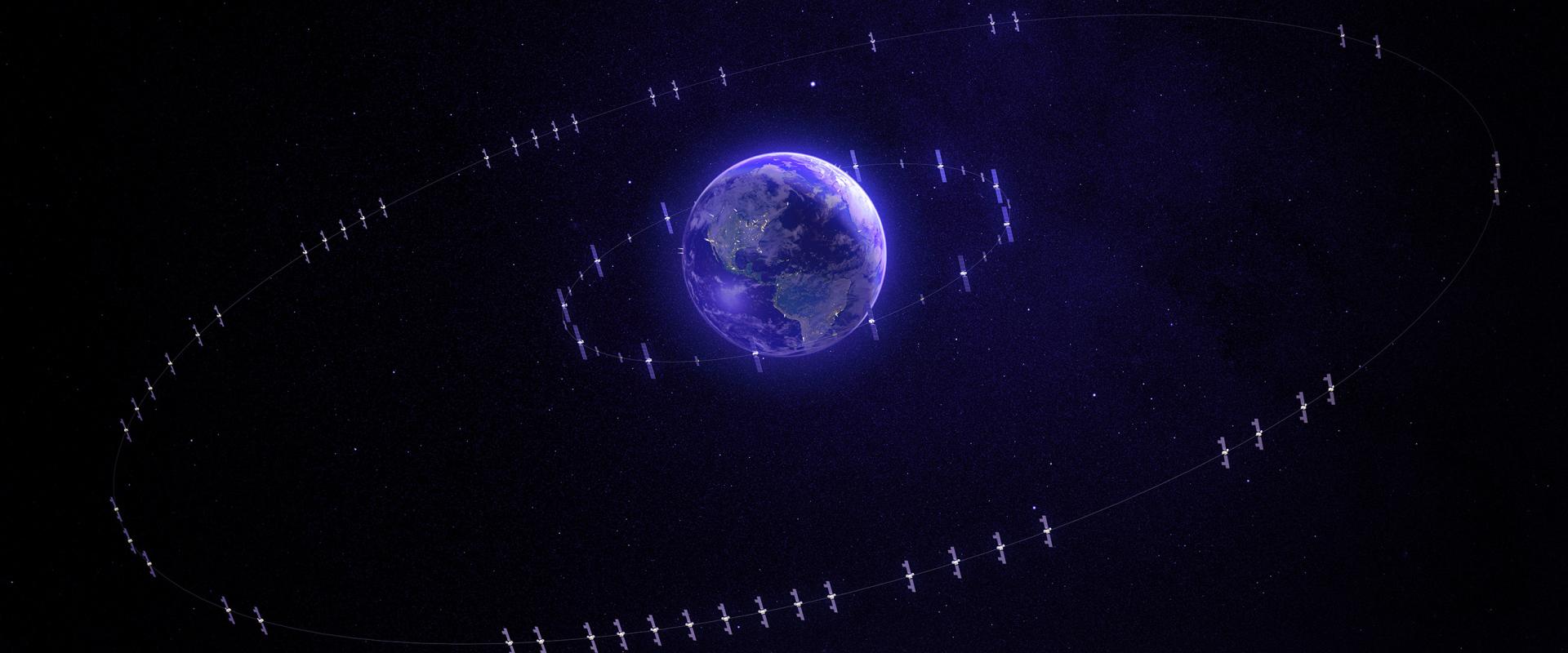Building Intelligent Networks for a Connected World: Powering Industrial Automation with O3b mPOWER

Empowering Digital Transformations with Intelligent Networks, Advanced Industrial Automation and Edge-Enabled Satellite Connectivity.
Intelligent networks are rapidly becoming the foundation of today’s connected world as connectivity needs are expanding rapidly, not only to support existing applications but also to enable entirely new ones. Real-time collaboration, industrial automation, IoT, and remote operations are driving demand for networks that are global, resilient, and adaptable. Meeting these needs requires more than incremental improvements—it calls for a new kind of connectivity architecture.
Industrial automation now relies on the seamless integration of cloud platforms, IoT devices, and resilient edge computing. SES’s intelligent network architecture integrates directly with major cloud platforms and empowers enterprises to deploy latency-sensitive applications, such as automated manufacturing controls, real-time supply chain monitoring, and remote asset management, without geographical constraint. Through innovations such as Cloud Direct and edge compute enablement, SES is creating a new paradigm for industrial automation, ensuring secure, scalable, and adaptive connectivity for modern enterprise operations.
By combining its geostationary (GEO) satellites at 36,000 km, two medium Earth orbit (MEO) constellations at 8,000 km, and partners’ low Earth orbit (LEO) satellites orbiting between 500 and 2,000 km, SES provides a level of flexibility that single-orbit systems cannot match. This layered approach eliminates coverage gaps and allows performance to be fine-tuned for different industries and use cases.
At the heart of this network is O3b mPOWER, SES’s second-generation MEO constellation designed to generate thousands of software-defined beams. These beams can be dynamically steered and adjusted, delivering the right balance of throughput, latency and resilience wherever enterprises operate.
Managing such a network across multiple orbital layers requires advanced automation. SES has built an AI-powered orchestration platform that continuously processes telemetry from the system to optimize performance in real time. It dynamically allocates capacity where it is needed, predicts and smooths traffic spikes, and ensures efficient use of spectrum across GEO, MEO, and LEO satellites. For customers, this means consistent quality of service, automated provisioning, and reliability for mission-critical operations. The platform also learns and adapts over time, ensuring the network becomes smarter as demand evolves.
Future-proofing Satellite Networks
Satellite networks aside, the boundaries between terrestrial and non-terrestrial networks are steadily dissolving. Enterprises and governments want to have high-performance connectivity at all times. The advancement of satellite networks represents an opportunity to build a hybrid space and ground network that is intelligent, flexible, and future-proof.
SES is looking beyond current demands to anticipate what enterprises will need next. For example, we’re enabling edge computing in orbit to support ultra-low-latency processing close to where data is generated. Our direct interconnection between satellites and cloud platforms will extend cloud capabilities to the farthest edges of the Earth. These innovations are designed to support scalable IoT applications—such as asset tracking, predictive maintenance, and environmental monitoring—without relying on terrestrial infrastructure. By focusing on practical, secure, and scalable solutions, SES continues to redefine how businesses think about connectivity and infrastructure.
Another example is our strategic partnership with Lynk Global, a direct-to-device (D2D) satellite operator where we are supporting Lynk with a suite of integrated services—including MEO relay and ground network infrastructure—to enhance the resilience and reach of its D2D network. We’re also co-developing Lynk’s network architecture and exploring satellite manufacturing opportunities in the US and Europe. This collaboration positions SES as a strategic channel partner, helping government, mobile network operators (MNOs), and automotive customers access Lynk’s global D2D services.
From subsea energy exploration to financial services, agile manufacturing and autonomous mining, the next phase of the industrial internet will rely on seamless hybrid networks that span air, land, sea, and space. SES’s roadmap is designed not just to respond to these shifts but to help define them. By uniting multi-orbit architecture, AI-driven orchestration, and a clear focus on new applications, SES is building a digital superhighway where the sky is no longer a boundary but a pathway to growth and innovation.




